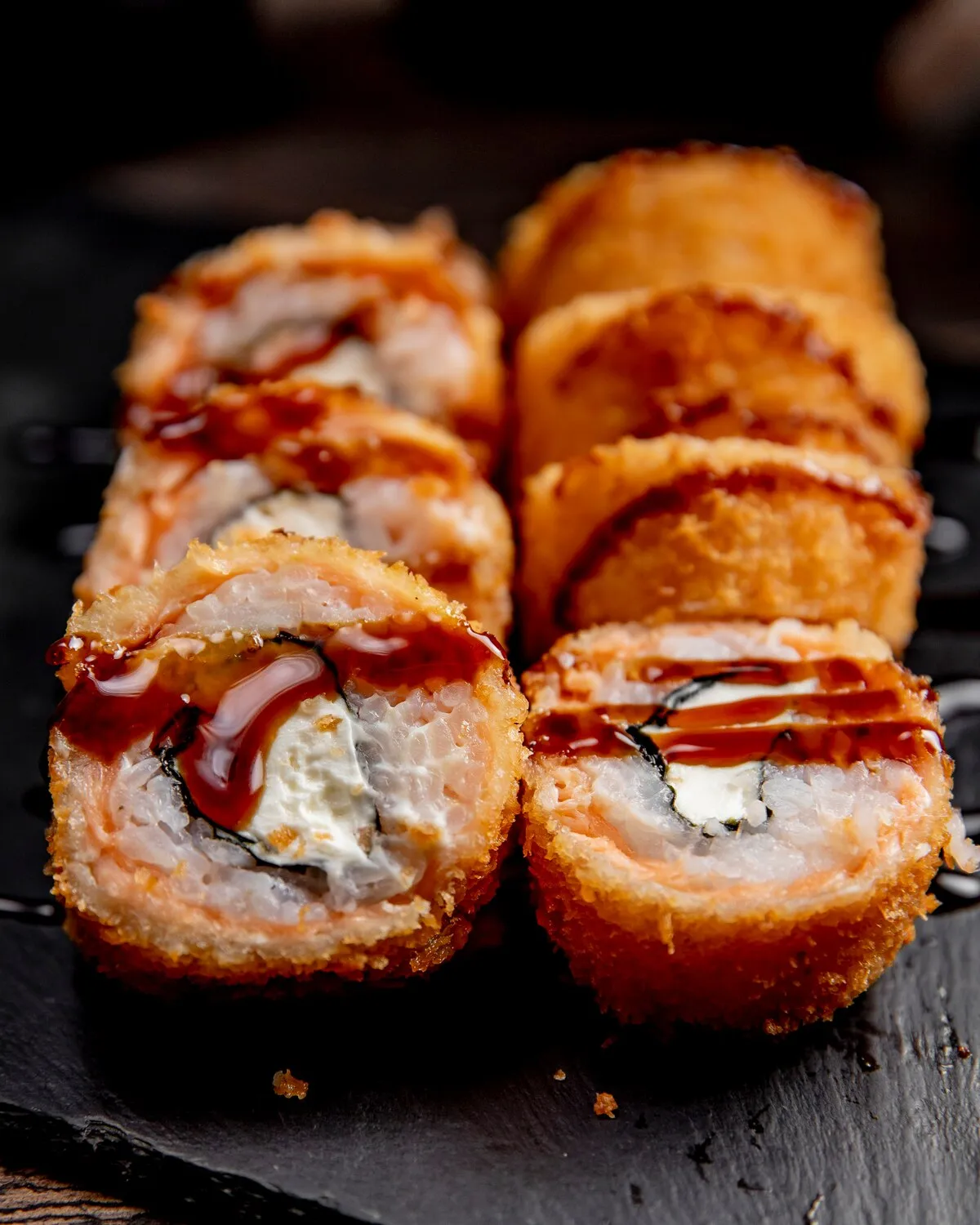
Hot Roll
Fried sushi roll, often filled with salmon, cream cheese and other ingredients.
Nutrition Facts
* The % Daily Value (DV) tells you how much a nutrient in a serving of food contributes to a daily diet. 2,000 calories a day is used for general nutrition advice.
Nagasaki Sushi
The hot roll, a type of fried sushi roll, emerged as part of the American sushi scene's evolution. As sushi gained popularity in the United States, chefs adapted traditional techniques and ingredients to cater to local tastes. This often involved incorporating cooked seafood, cream cheese, and frying techniques, diverging from traditional Japanese sushi.
Hot rolls represent the Americanization of sushi, reflecting a desire for familiar flavors and textures within the sushi format. They're often considered a gateway to more traditional sushi for those unfamiliar with raw fish.
American Sushi Culture
Hot rolls are a staple in many American sushi restaurants, particularly those catering to a wider audience beyond sushi purists. They exemplify the fusion of Japanese culinary techniques with American preferences.
Adaptation and Innovation
The creation of the hot roll demonstrates the adaptability of sushi as a cuisine, evolving to meet the demands and preferences of different cultural contexts.
The flavor profile of a hot roll is a blend of savory, creamy, and sometimes sweet elements, enhanced by the crispy texture of the fried exterior.
The primary flavors come from the filling ingredients. Salmon provides a rich, oily fish taste, while cream cheese adds a tangy, creamy counterpoint. Other common ingredients like avocado contribute a smooth, buttery texture. The nori seaweed imparts a subtle oceanic flavor. The frying process contributes a satisfying crispy texture and a slightly toasted flavor. Sweet and savory sauces, such as eel sauce (unagi sauce) or spicy mayo, are often drizzled on top to enhance the overall flavor.
Ingredient Quality
Use high-quality ingredients, especially the salmon, for the best flavor. Freshness is key, even if the salmon is cooked.
Frying Temperature
Maintain the oil temperature at an appropriate level (around 350-375°F) to ensure the roll cooks quickly and evenly without becoming overly greasy. Don't overcrowd the fryer.
Sauce Application
Drizzle sauces sparingly to avoid overpowering the other flavors. Presentation is important, so aim for an aesthetically pleasing drizzle pattern.
Serving Temperature
Serve hot rolls immediately after frying for optimal texture and flavor. Allowing them to sit can lead to a soggy texture.
Explore additional Sushi dishes and restaurants
Explore SushiDiscover top dining spots and culinary experiences in Itapema.
Explore ItapemaLearn more about the food culture, restaurant scene, and culinary heritage of Brazil.
Explore Brazil